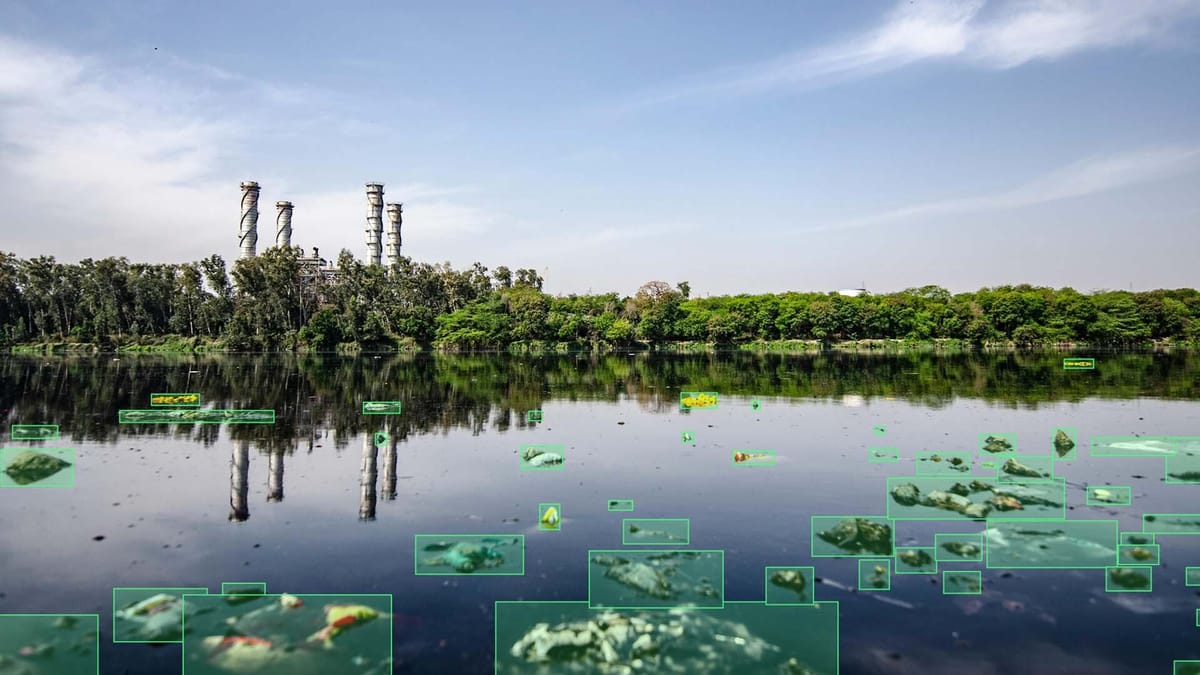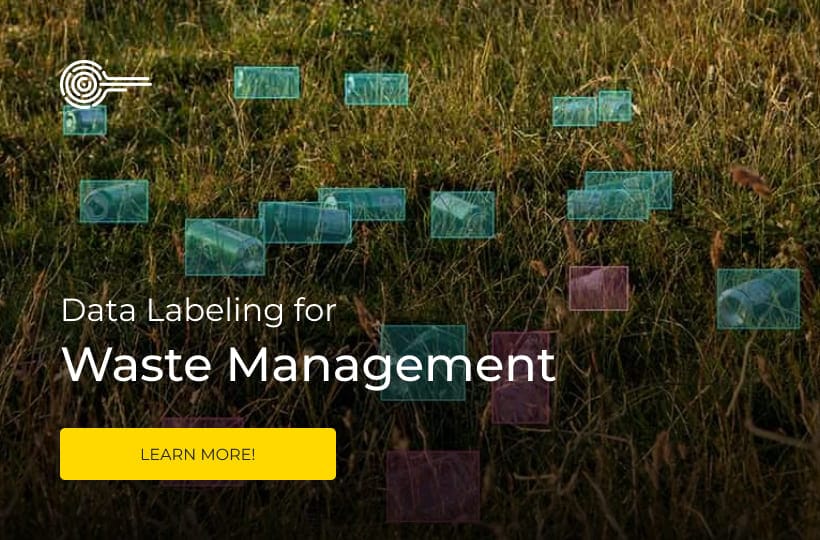Building Image Datasets for Smart Sorting & Recycling Robots

Automation of waste sorting processes is becoming increasingly important in the context of the development of computer vision technologies and the need to increase recycling efficiency. The creation of high-quality image sets is a key element for systems that perform material classification, contamination detection and object analysis in conveyor vision mode. Such datasets provide machine learning models with the necessary diversity and representativeness of samples, which allows them to work stably in real waste sorting lines.
Reliable preparation of visual data directly affects the accuracy and stability of algorithms that determine the type of material, the level of contamination and the spatial position of objects on the conveyor. This, in turn, is an important factor for the implementation of approaches aimed at optimizing resources and supporting the principles of the circular economy, where correct sorting plays a central role in increasing the share of material reuse.
Key Takeaways
- Global scale demands urgent, data-driven recycling solutions.
- High-quality image datasets improve model accuracy and uptime.
- Sensors and vision systems boost throughput and safety.
- Annotation rigor determines generalization across facilities.

Inside waste management AI: from computer vision to robotic sortation
AI systems in waste processing encompass the entire cycle, from initial image analysis to robotic sorting. At the initial stage, computer vision algorithms perform material classification, determining the type of material based on sets of images collected under different conveyor operating conditions. In parallel, contamination detection is performed, allowing the assessment of the degree of contamination and distinguishing between fractions suitable for recycling and those that are mixed or unsuitable.
Further integration of these results into conveyor vision systems provides spatial binding of objects, assessment of their movement, and generation of commands for actuators. Robotic manipulators perform sorting based on the classification solutions of the model, allowing for the automation of processes and a reduction in dependence on manual labor. This approach supports the principles of the circular economy, as accurate recognition and selection of materials increases the efficiency of recycling and optimizes the operation of waste sorting lines.
Core stack: cameras, hyperspectral and near‑infrared sensors, and machine learning models
Effective waste sorting systems are based on a combination of hardware and software components. The basis is cameras and sensors, particularly hyperspectral and near-infrared (NIR) sensors, which provide multi-channel data collection on materials. Such sensors can significantly improve the accuracy of material classification, as well as effectively detect contamination, even when visual differences between objects are minimal.
The integration of this data into machine learning algorithms enables conveyor vision systems to assess the location and condition of objects in real-time, thereby forming control commands for robotic sorting. This approach facilitates a more accurate separation of recyclable materials and waste reduction, aligning with the principles of the circular economy and enhancing the efficiency of waste sorting lines.
How systems identify materials, brands, and contaminants at high speed
Modern waste sorting systems use a combination of sensor data and machine learning algorithms to quickly and accurately identify materials, packaging brands, and contaminants. Data from cameras, hyperspectral, and NIR sensors are processed by material classification models, which allow them to distinguish between plastic, glass, metal, and paper objects. Contamination detection is performed in parallel, which identifies impurities, food residues, or other contaminants that can compromise the quality of processing.
The use of deep learning algorithms in combination with conveyor vision systems enables real-time data processing on rapidly changing conveyor belts, allowing robotic manipulators to efficiently sort materials. The integration of technologies enhances the efficiency of resource collection and reuse, directly supporting the concept of a circular economy.
Smart bins and predictive routing: reducing collections, fuel use, and overflow
Smart bins and waste collection route prediction systems use sensor data and analytics to optimize collection logistics. The systems can track bin fill levels and waste types, including material classification and contamination detection, which helps determine which fractions require priority collection.
Combining this data with analytics and predictive models helps reduce trips, reduce fuel consumption, and prevent bin overfills. It also helps to sort materials more efficiently after collection, thereby increasing the overall efficiency of the recycling system and supporting the circular economy by utilizing resources more effectively and reducing emissions.
Building better image datasets: the foundation for accurate materials sorting
Performance benchmarks and real-world outcomes from AI-driven facilities
Implementing AI systems in waste sorting facilities provides measurable performance indicators that reflect real-world performance. Performance metrics include material classification accuracy, contamination detection success rate, conveyor throughput, and the efficiency of the conveyor vision system.
Real-world results demonstrate increased fractions of correctly sorted materials, reduced non-recyclable waste, and improved line performance. Automated solutions help optimize resources, reduce operating costs, and support the circular economy, as more accurate material sorting increases reuse and reduces landfill waste.
Throughput and uptime
In robotic waste sorting systems, two key performance indicators are throughput (the amount of materials processed per unit of time) and uptime (uninterrupted operation time). High-precision material classification and effective contamination detection reduce sorting errors, thereby avoiding delays on the conveyor and directly increasing the system's throughput.
Conveyor vision systems integrated with robotic manipulators allow for fast and reliable processing of waste streams, even in large volumes. This contributes to operational stability and maximum uptime, while also supporting the principles of the circular economy, as accurate and uninterrupted sorting increases the proportion of materials suitable for reuse and reduces waste.

Challenges and risks: data quality, privacy, e-waste, and energy use
- Data quality and annotation errors. Incorrect or incomplete image sets can compromise the accuracy of material classification and contamination detection, resulting in sorting errors and the loss of recyclable materials.
- Privacy concerns. Cameras and sensors installed in public or commercial areas can capture personal data. Anonymization and compliance with privacy regulations must be ensured.
- E-waste and equipment lifecycle. The use of a large number of sensors, cameras and robotic systems creates its own electronic waste. To support the principles of the circular economy, it is necessary to plan for the recycling and disposal of equipment.
- Energy consumption. High-performance systems that process large amounts of data in real time can consume significant amounts of energy. Optimizing algorithms and utilizing energy-efficient hardware solutions reduces the negative environmental impact.
Summary
AI in waste management combines hardware and software solutions to improve the efficiency of material sorting. The combination of cameras, hyperspectral and NIR sensors, along with machine learning algorithms, enables systems to accurately and quickly determine the type of material, the level of contamination, and the position of objects on the conveyor. High-quality and diverse image sets are the foundation for training models, ensuring stable operation of material classification and contamination detection algorithms in real-world conditions.
The integration of such systems into robotic lines and smart garbage bins increases productivity, reduces container overflow, and optimizes waste collection logistics. Measurable indicators, such as throughput and uptime, enable the assessment of the effectiveness of implementing conveyor vision solutions. In this case, it is necessary to consider the challenges associated with data quality, confidentiality, energy consumption, and the generation of e-waste.
The use of these technologies contributes to a more accurate separation of recyclable materials, optimizing the reuse of resources and directly supporting the circular economy concept, which in turn increases the overall sustainability of waste management systems.
FAQ
What is the role of AI in modern waste management?
AI enables precise material classification, real-time contamination detection, and efficient conveyor vision, allowing robotic systems to sort materials more accurately and consistently, reducing manual labor and improving overall recycling efficiency.
Which sensors are commonly used in AI-driven waste sorting systems?
Systems utilize RGB cameras, depth sensors, hyperspectral (HSI) sensors, and near-infrared (NIR) sensors. These sensors provide rich visual and spectral data, which improves material classification and contamination detection accuracy.
Why are high-quality image datasets important for waste sorting AI?
Comprehensive datasets ensure models can reliably recognize materials and contaminants under varied conditions, enhancing the performance of conveyor vision systems and supporting accurate robotic sorting.
How do AI systems detect contamination in waste streams?
AI models analyze visual and spectral data to identify impurities such as food residue, mixed materials, or non-recyclable elements. Effective contamination detection improves sorting quality and reduces material loss.
What is the significance of smart bins and predictive routing?
Smart bins equipped with sensors provide real-time fill-level data, enabling optimized collection routes and improved efficiency. This reduces collection frequency, fuel use, and overflow, while supporting the principles of a circular economy.
How is throughput measured in robotic sorting facilities?
Throughput refers to the volume of materials processed per unit of time. High-accuracy material classification and conveyor vision enable robots to sort more efficiently, maximizing operational efficiency and system uptime.
What challenges affect AI-driven waste management systems?
Challenges include data quality issues, privacy concerns, energy consumption, and electronic waste. Addressing these factors ensures reliable material classification and contamination detection while maintaining environmental sustainability.
How do hyperspectral and NIR sensors enhance AI performance?
These sensors capture detailed spectral signatures of materials that are visually similar, improving material classification and enabling more precise contamination detection on high-speed conveyor vision systems.
What are the real-world outcomes of implementing AI in recycling facilities?
AI deployment yields higher sorting accuracy, increased recovery rates, reduced operational costs, and enhanced alignment with circular economy principles by maximizing resource reuse.
Why is data diversity important for training AI models?
Diverse datasets, including different lighting, angles, and material conditions, prevent domain shift and ensure robust material classification and contamination detection, allowing conveyor vision systems to operate reliably across multiple environments.

